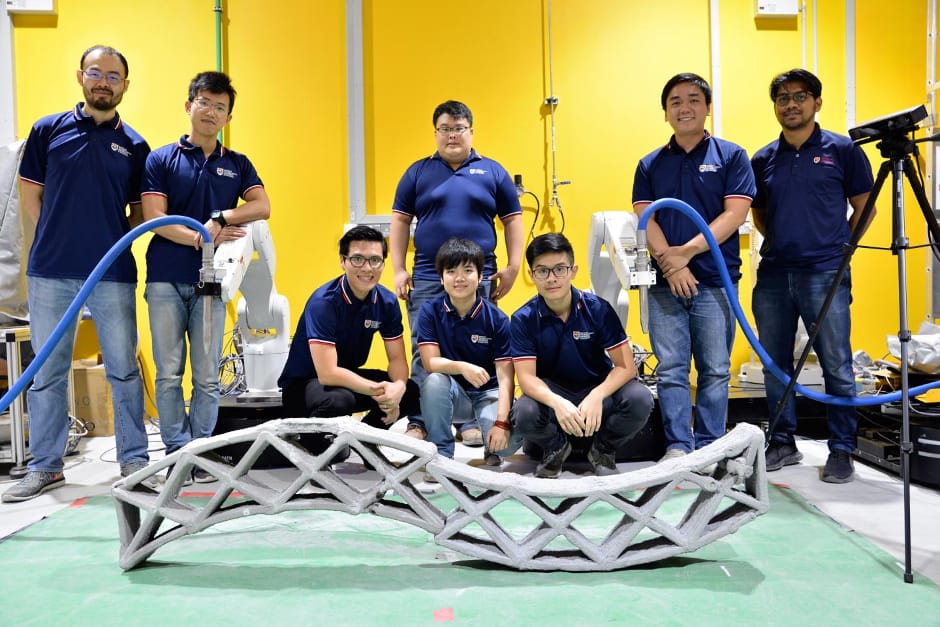
Dubbed swarm printing, the method of concurrent 3D-printing from Nanyang Technological University (NTU) is said to pave the way for a team of mobile robots to print even bigger structures.
Developed by Assistant Professor Pham Quang Cuong and his team at NTU’s Singapore Centre for 3D Printing, this new multi-robot technology was published in Automation in Construction. The NTU scientist was also behind the Ikea Bot earlier this year where two robots assembled an Ikea chair in 8 min 55s.
According to NTU, this new development will allow for unique concrete designs not currently possible with conventional casting, thanks in part to a specially formulated cement mix suitable for 3D printing.
Currently, 3D-printing of large concrete structures requires huge printers that are larger than the printed objects, which is unfeasible on construction sites with space constraints. Having multiple mobile robots that can 3D print in sync means large structures like architectural features and specially-designed facades can be printed anywhere as long as there is enough space for the robots to move around the work site.
The NTU robots 3D-printed a concrete structure measuring 1.86m x 0.46m x 0.13m in eight minutes. It took two days to harden and one week for it to achieve its full strength before it was ready for installation.
“We envisioned a team of robots which can be transported to a work site, print large pieces of concrete structures and then move on to the next project once the parts have been printed,” said Asst Prof Pham from NTU’s School of Mechanical and Aerospace Engineering.
“This research builds on the knowledge we have acquired from developing a robot to autonomously assemble an Ikea chair. But this latest project is more complex in terms of planning, execution, and on a much larger scale.”
NTU said that its multi-step process starts with a computer mapping out the design to be printed and assigning a specific part of the printing to a robot. It then uses a special algorithm to ensure that the robot arms will not collide during the concurrent printing.
Using precise location positioning, the robots then move into place and print the parts, ensuring that the joints between the separate parts are overlapped. Finally, the mixing and pumping of the specialised liquid concrete mix have to be blended evenly and synchronised to ensure consistency.
Next steps for the NTU team involve integrating more robots to print larger scale structures, optimising the printing algorithm for consistent performance and to improve the concrete material for faster curing.




Red Bull makes hydrogen fuel cell play with AVL
Formula 1 is an anachronistic anomaly where its only cutting edge is in engine development. The rules prohibit any real innovation and there would be...